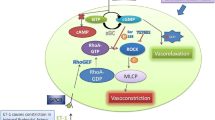Abstract
Purpose
To establish if an improvement in OAB symptoms by treatment with anticholinergics is associated with a corresponding improvement in sexual function.
Methods
This was a prospective observational questionnaire study using ePAQ-PF (electronic Pelvic Assessment Questionnaire-Pelvic Floor), PISQ 12 and PGI-I for overactive bladder and sexual function. Sexually active women with overactive bladder were included in the study. Prolapse and voiding dysfunction were exclusion criteria for the study. All women were followed up for 6 months and were treatment naïve. Sexual function before and after treatment was compared. The data were analysed using SPSS. Formal ethical approval was obtained.
Results
34 women were included in the study. Only 8 % of women commenced on anticholinergics had an improvement in sexual function, compared to 66 % who experienced an improvement in OAB symptoms. Women who did experience a benefit in sexual function did so in the first 3 months of treatment of their overactive bladder and always noted an improvement in OAB symptoms.
Conclusions
Treatment of the overactive bladder symptoms does not guarantee improvement in sexual function.
Similar content being viewed by others
References
Field SM, Hilton P (1993) The prevalence of sexual problems in women attending for urodynamic investigation. Int Urogynecol J Pelvic Floor Dysfunct 4:212–215
Cohen BL, Barboglio P, Gousse A (2008) The impact of lower urinary tract symptoms and urinary incontinence on female sexual dysfunction using a validated instrument. J Sex Med 5(6):1418–1423
Coyne KS, Margolis MK, Jumadilova Z, Bavendam T, Mueller E, Rogers R (2007) Overactive bladder and women’s sexual health: what is the impact? J Sex Med 4(3):656–666
Oh SJ, Ku JH, Choo MS, Yun JM, Kim DY, Park WH (2008) Health-related quality of life and sexual function in women with stress urinary incontinence and overactive bladder. Int J Urol 15(1):62–67
Patel AS, O’Leary ML, Stein RJ et al (2006) The relationship between overactive bladder and sexual activity in women. Int Braz J Urol 32(1):77–87
Sand PK, Goldberg RP, Dmochowski RR, McIlwain M, Dahl NV (2006) The impact of the overactive bladder syndrome on sexual function: a preliminary report from the multicenter assessment of transdermal therapy in overactive bladder with oxybutynin trial. Am J Obstet Gynecol 195(6):1730–1735
Sen I, Onaran M, Tan MO et al (2007) Evaluation of sexual function in women with overactive bladder syndrome. Urol Int 78(2):112–115
Radley SC, Jones GL, Tanguy EA, Stevens VG, Nelson C, Mathers NJ (2006) Computer interviewing in urogynaecology: concept, development and psychometric testing of an electronic pelvic floor assessment questionnaire in primary and secondary care. BJOG 113(2):231–238
Rogers RG, Coates KW, Kammerer-Doak D, Khalsa S, Qualls C (2003) A short form of the pelvic organ prolapse/urinary incontinence sexual Questionnaire (PISQ-12). Int Urogynecol J Pelvic Floor Dysfunct 14(3):164–168
Rogers RG, Omotosho T, Bachmann G, Sun F, Morrow JD (2009) Continued symptom improvement in sexually active women with overactive bladder and urgency urinary incontinence treated with tolterodine ER for 6 months. Int Urogynecol J Pelvic Floor Dysfunct 20(4):381–385
Acknowledgments
The author would like to thank Hilary Wood, who was the research nurse on the study and who helped with data collection. This study was funded by a joint educational grant from BSUG and BAUS and funded by Pfizer.
Author information
Authors and Affiliations
Corresponding author
Ethics declarations
Conflict of interest
None.
Rights and permissions
About this article
Cite this article
Jha, S. Impact of treatment of overactive bladder with anticholinergics on sexual function. Arch Gynecol Obstet 293, 403–406 (2016). https://doi.org/10.1007/s00404-015-3828-5
Received:
Accepted:
Published:
Issue Date:
DOI: https://doi.org/10.1007/s00404-015-3828-5



